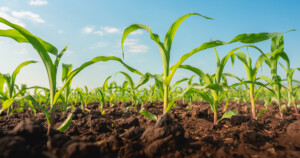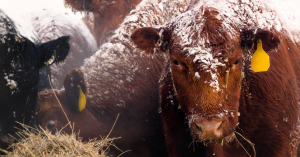No month is more associated with a crop than October is with a certain orange orb. That’s why it’s #NationalPumpkinMonth. Pumpkins are the centerpiece of the booming $1.25 billion US agritourism industry. You-pick pumpkin patches are a main attraction, providing family photo opportunities young mothers love even more than their pumpkin spice lattes. Corn mazes, apple orchards, petting zoos, playground equipment (I once saw a combine made into a slide at a farm in Kentucky) often adorn these landscapes, while on-site bakeries transform their farm-grown crops into delectable delights. Agritourism thrives on 28,000 farms across the fruited plain. This includes our friend Dallas Peebles, who uses Huma products to grow pumpkins and family fun on his farm in Augusta, Arkansas. You can virtually visit his farm here.
“The best tractor ever made.” That’s how many of us describe the John Deere 4020. The legendary farm machine many of us grew up on turned 60 years old this year. It was the precursor to the modern farm tractor, focusing as much on operator comfort and versatility as power and performance. The 4020 was ideal for its time, when the average farm size was 325 acres, and most farmers raised a variety of crops and livestock. They needed a tractor to till, plant, bale and mow, as well as perform chore work around the barnyard. None did it better than the 4020. Having an easy-to-get-to fuel tank located at the front of the tractor was more than just symbolic. From its hydrostatic steering, adjustable seat with backrest and console that placed hydraulic controls within hands reach, the 4020 was easy on the operator. Adjustable front axles accommodated various row-crop spacings while a single-lever powershift transmission made shifting gears easier than ever before. Nearly 185,000 units were sold during its nine-year run, accounting for nearly 50% of all John Deere tractor sales and making the 4020 one of the most popular models ever produced. Yet the testament to any icon is longevity.
Farm issues seldom take center stage in national elections. Given 1.6% of the US population is employed as the world’s greatest profession, I suppose that’s understandable (although 10% of all employed Americans work in agriculture). But this election year, the spotlight is shining brightly on the output of farming: food. The ultimate necessity item, food is literally the one thing we can’t live without. Everyone feels the pinch when food prices are high, especially the poorest among us. Food prices have soared over 22% during the past four years. Americans are now spending nearly 13% of their disposable income on food. Percentage wise, that’s the most we’ve spent to eat in over forty years. In these times, it’s natural to point to the producers of food as a culprit. Yet that’s anything but the case. Out of every dollar that consumers spend on food, less than 15 cents go to the farmer. And this farmer’s cut has been dropping. This year, farm revenue is expected to decline 22% over last year. Another 15% drop expected for 2025. This represents the largest 2-year decline in history.
Related Posts

This Week in Ag #10
Football may be a game of inches, but farming is a business of fractional inches. Take planting. Seed placement is paramount to the success of a crop. Farmers spend lots of time calculating the optimum rate and depth to plant their seeds based on genetics, soil type, soil conditions, weather, management practices and the desired output

This Week in Ag #12
#Plant23 is well underway. From the time seeds are sown, how many days should it take for crops to emerge? That can vary greatly, from days to weeks. But for many crops, it’s not really about calendar days, but Growing Degree Days (GDD).

This Week in Ag #48
The popular TV series Yellowstone, along with the western lifestyle craze, has certainly romanticized ranching. It seems like everyone wants to be a rancher, until there’s real-world ranching stuff to do. This week’s bone-chilling Midwestern weather brings back memories. Notice I didn’t say fond memories. When you have livestock, they require care every day. Utility tractors

